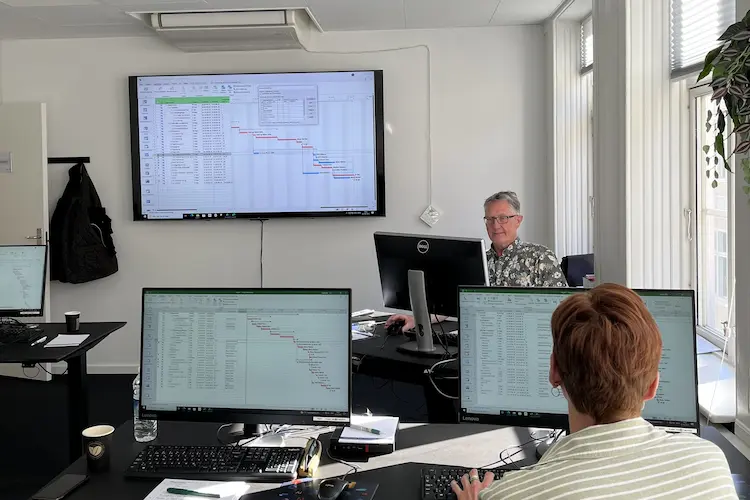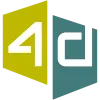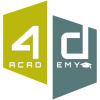Det lærer du
Microsoft SQL Integration Services er et af de mest centrale produkter i Microsoft's række af Business Intelligence produkter og er en platform til bearbejdelse af data fra simple kopieringer til avancerede opgaver som eksempelvis konsolidering og rensning af data. SQL Server Integration Services er et værktøj, der er beregnet til håndtering af den ofte meget omfattende ETL proces, der er nødvendig, når data skal kopieres fra virksomhedens kildesystemer til Data Warehouses og Data Marts.Efter kurset kan du blandt andet:
- Oprette en SQL Server Integration Services solution
- Oprette Control Flows
- Oprette Data Flows
- Implementere Event Handlers
- Planlægge og håndtere Deployment
- Automatisere eksekvering via Jobs
- Sikkerhed og adgang til pakker
Det får du
Før kurset
- Mulighed for at tale med en instruktør, der kan hjælpe dig med at finde det helt rigtige kursus.
På kurset
- Undervisning af Danmarks mest erfarne instruktørteam i hyggelige og fuldt opdaterede kursuslokaler i centrum af København.
- Et kursus bestående af en vekslen mellem teori og praktiske øvelser. Vi ved, hvor vigtigt det er, at du får tid til at arbejde med opgaverne i praksis, og derfor har vi altid fokus på hands-on i undervisningen.
- Et opgavekompendie og en relevant bog, der understøtter kurset, som kan anvendes som opslagsværk efter kurset.
- Fuld forplejning, som inkluderer morgenmad, friskbrygget kaffe, te, frugt, sodavand, frokost på en italiensk restaurant på Gråbrødretorv, kage, slik, og naturligvis Wi-Fi til dine devices.
- Et kursuscertifikat med bevis på dine nye kvalifikationer.
Efter kurset
- Adgang til vores gratis hotline, som betyder, at du op til et år efter kurset kan ringe eller skrive til os, hvis du har spørgsmål til de emner, der er blevet gennemgået på kurset.
- Vores unikke tilfredshedsgaranti, som er din tryghed for at få fuldt udbytte af dit kursus.
Få det optimale ud af kurset
Dette Integration Services (SSIS) kursus indgår som en del af vores samlede udbud af Business Intelligence kurser og henvender sig til dig, der skal i gang med at arbejde med Microsoft SQL Server Integration Services og ønsker at få kendskab til en række af de grundlæggende funktioner.Kurset er et teknisk kursus og det forventes, at du har deltaget på voresSQL Grundlæggende kursus eller har tilsvarende viden om Business Intelligence, datamodellering og SQL.
Kursusindhold
Modul 1 - Introduktion til Microsoft SQL Server Integration Services
Målet med dette modul er at give dig et overblik over, og kendskab til, en række af de begreber, der er relevante i forhold til Microsoft SQL Server Integration Services og ETL processen.
Følgende emner vil blive gennemgået:
Følgende emner vil blive gennemgået:
- ETL Processen
- SSIS Arkitektur
- Værktøjer til Administration og Konfiguration
- SQL Server Data Tools
- SQL Server Integration Server projekter
- SQL Server Integration Server pakker
Modul 2 – Introduktion til Control Flow
Målet med dette modul er at introducere Control Flows, som er den overordnede styring af eksekveringen af SQL Server Integration Services pakker. I modulet introduceres variabler, parametre og expressions.
Følgende emner vil blive gennemgået:
Følgende emner vil blive gennemgået:
- Connection Managers
- Variabler
- Parametre
- Expressions
- Precedence Constraints
- Containers
- Introduktion til Expressions
- Precedence Constraints
- Execute SQL Task
- Package Parts
Modul 3 - Control Flow Tasks
Målet med dette modul er at introducere en række almindeligt anvendte Control Flow Tasks og gøre dig i stand til anvende disse.
Følgende emner vil blive gennemgået:
Følgende emner vil blive gennemgået:
- Script Task
- Send Mail Task
- File System Task
- For Loop Containers
Modul 4 – Introduktion til Data Flow
Målet med dette modul er at introducere Data Flows. I modulet gennemgås en række forskellige datakilder, datadestinationer og almindeligt anvendte simple transformation tasks.
Følgende emner vil blive gennemgået:
Følgende emner vil blive gennemgået:
- Data Flow Transformations typer
- Data Flow sources
- Data Flow destinations
- Simple Data Transformations
- Data Viewers
Modul 5 – Avancerede Data Flows
Målet med dette modul er at præsentere mere avancerede Data Flow Tasks. Modulet vil bl.a. fokusere på opgaver, der typisk er relateret til data warehouse løsninger som eksempelvis indsættelse og opdatering af data i fact tabeller og konsolidering af data.
Følgende emner vil blive gennemgået:
Følgende emner vil blive gennemgået:
- Lookup
- Union All
- Merge Join
- Fuzzy Lookup
Modul 6 – Incremental Data Loads
Målet med dette modul er at præsentere løsninger og muligheder i forhold til incremental data loads (delta loads) og håndtering af slowly changing dimensions.
Følgende emner vil blive gennemgået:
Følgende emner vil blive gennemgået:
- Data Warehouse Load Cyklus
- Change Data Capture (CDC)
- Slowly Changing Dimensions
- MERGE statement
Modul 7 - Debugging, Logging og Fejlhåndtering
Målet med dette modul er at gøre dig i stand til at implementere forskellige teknikker til Logging og Fejlhåndtering. Efter dette modul vil du have en god forståelse for mulighederne omkring implementering af logging og fejlhåndtering i SQL Server Integration Services pakker.
Følgende emner vil blive gennemgået:
Følgende emner vil blive gennemgået:
- Fejlhåndtering i data flow
- Debugging
- Fejlhåndtering
- Event Handlers
- Custom Logging
Modul 8 – Checkpoints og Transaktioner
Målet med dette modul er at introducere mulighederne for at gruppere tasks og opdateringer.
Følgende emner vil blive gennemgået:
Følgende emner vil blive gennemgået:
- Checkpoints
- Transaktioner
Modul 9 – Deployment
Målet med dette modul er at introducere dig for de muligheder og overvejelser, der er vigtige i forbindelse med deployment af projekter og oprettelse og konfiguration af Integration Services Catalog.
Følgende emner vil blive gennemgået:
Følgende emner vil blive gennemgået:
- Deployment Modeller
- Integration Services Catalog
- Konfiguration og logging i Integration Services Catalog
- Eksekvering af pakker i Integration Services Catalog
- Environments
Modul 10 - Administration og Sikkerhed
Målet med dette modul er at introducere dig til opsætning af sikkerhed i forhold til adgang til projekter og foldere. Desuden gennemgås almindeligt forekommende administrative opgaver som eksempelvis automatisering.
Følgende emner vil blive gennemgået:
Følgende emner vil blive gennemgået:
- SQL Server Integration Services Sikkerhed
- Automatisering
- SQL Server execution context
- Backup og Restore
Tilmeld kurset
Har du spørgsmål sidder vi klar til at hjælpe på vores live chat eller via kontaktsiden
Status
Startdato
Hvad siger vores kunder om os?
1242
Evalueringer seneste år
4,8
Gns. Rating ud af 5
Siden 1990 har 4D Academy hjulpet virksomheder og specialister med at omsætte viden til målbare resultater. Vores kursister belønner os med en gennemsnitlig rating på 4,8 ud af 5 på Trustpilot, Google og Facebook, og det gør os stolte.
Se hvorfor både nye og erfarne fagfolk vælger os, når de vil løfte deres kompetencer.
Hold dig opdateret med vores nyhedsbrev
Her bor vi
Hovedindgang
Læderstræde 22-26, 2. sal
1201 København K
1201 København K
Kursusindgang
Læderstræde 22-26, 2. sal
1201 København K
1201 København K
Åbningstider
Mandag: 08.00 - 16.00
Tirsdag: 08.00 - 16.00
Onsdag: 08.00 - 16.00
Torsdag: 08.00 - 16.00
Fredag: 08.00 - 16.00
Tirsdag: 08.00 - 16.00
Onsdag: 08.00 - 16.00
Torsdag: 08.00 - 16.00
Fredag: 08.00 - 16.00





